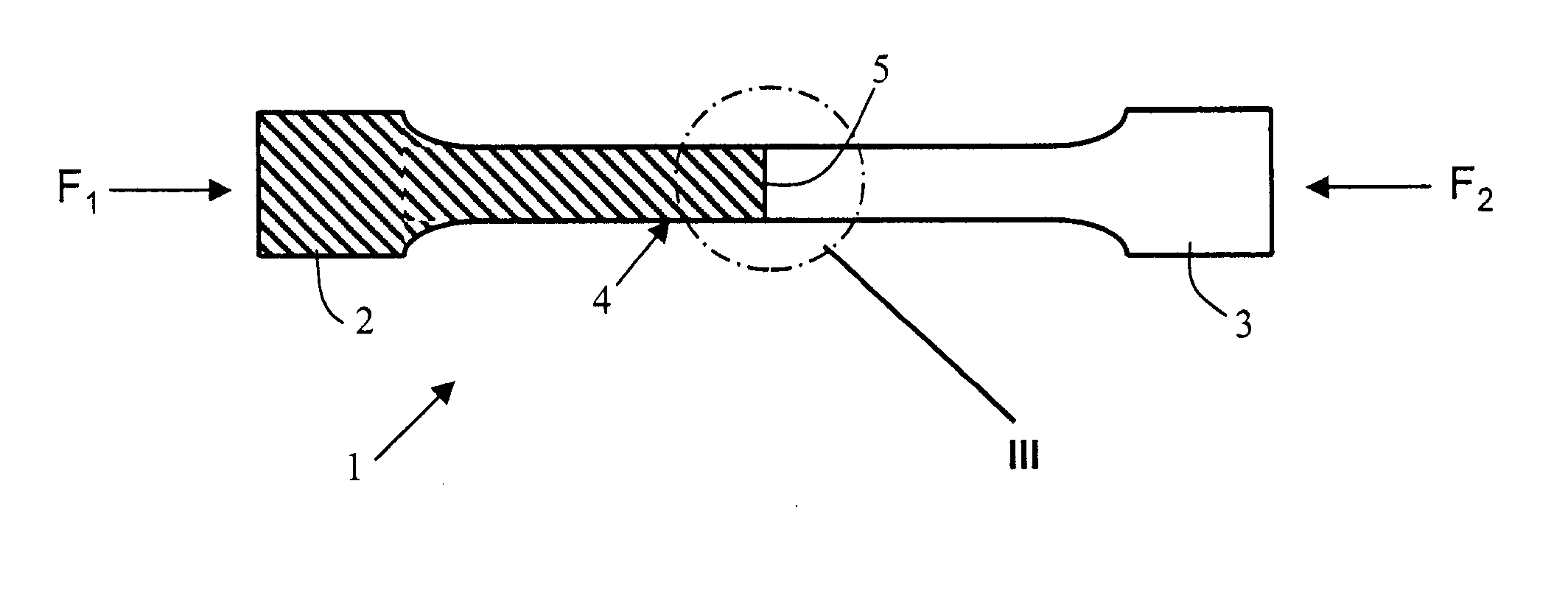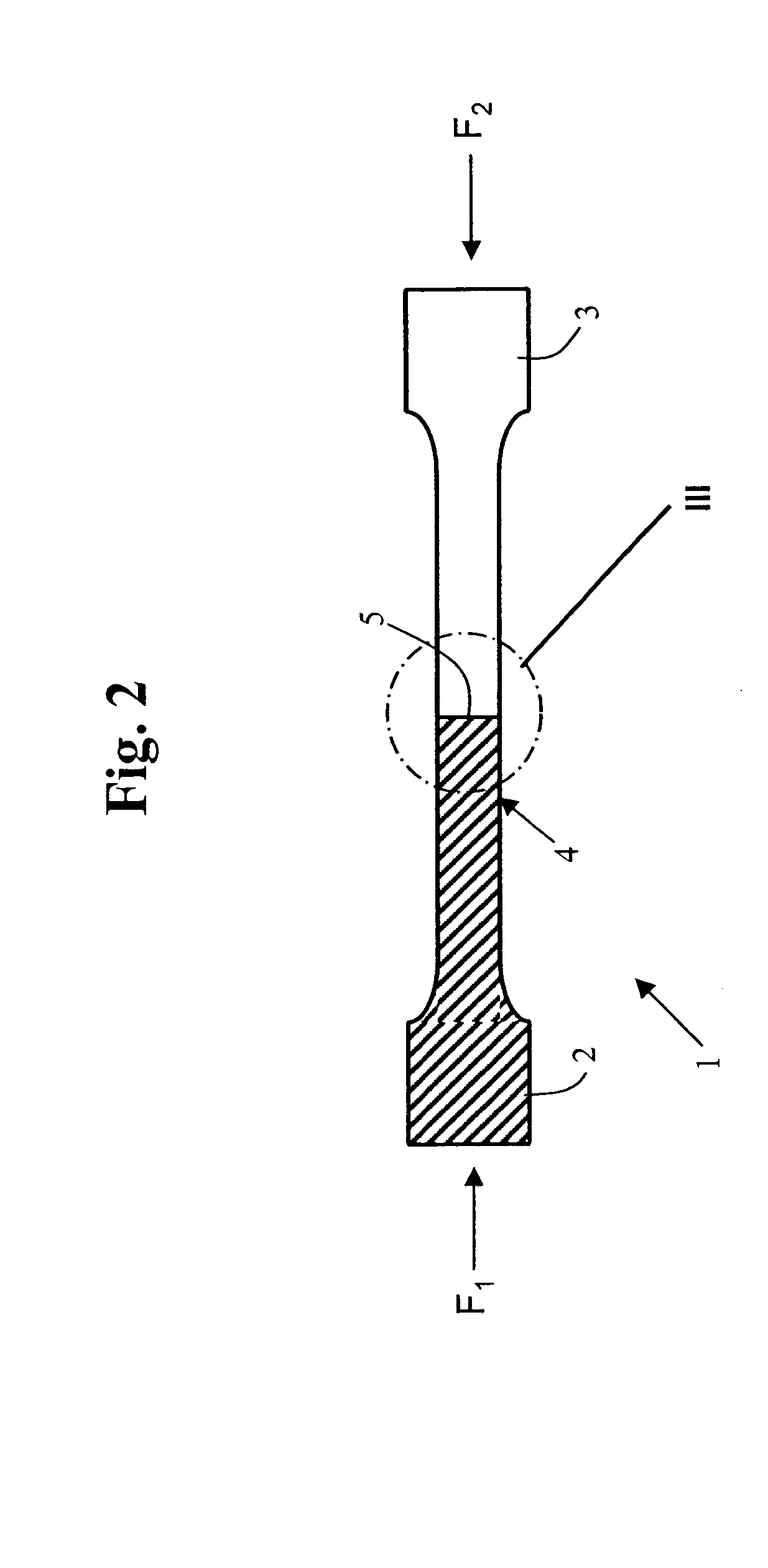Method and article for evaluating and optimizing joined thermoplastic parts
a technology of thermoplastic parts and optimization methods, applied in the field of thermoplastic workpiece joining, can solve the problems of inconvenient testing of cylindrical articles with joints interrupting the circumference, and achieve the effect of convenient testing and much more economic and efficient selection
- Summary
- Abstract
- Description
- Claims
- Application Information
AI Technical Summary
Benefits of technology
Problems solved by technology
Method used
Image
Examples
Embodiment Construction
[0026] In one aspect, the present invention is directed to the optimization of mechanical properties of thermoplastic articles made by welding or injection molding. The optimization method of the present invention is preferably carried out using mechanical testing data obtained with test samples such as that depicted generally at 1 in FIG. 2. The geometry of the test samples, including their dimensions and shape, is normally chosen in accordance with recognized protocols established by entities such as the American Society for Testing of Materials (ASTM) and the International Standards Organization (ISO). Sample 1 includes end grip portions 2, 3 and an active gage portion 4 with an interface 5 and an inter-phase region substantially in the center of gage portion 4. Various shapes that interface 5 can assume are shown in the enlarged views of region III seen in FIGS. 3A-3G. The present test samples are generally planar, but may also be cylindrical for some applications.
[0027] Test s...
PUM
| Property | Measurement | Unit |
|---|---|---|
| mechanical performance | aaaaa | aaaaa |
| shape | aaaaa | aaaaa |
| temperature | aaaaa | aaaaa |
Abstract
Description
Claims
Application Information
 Login to View More
Login to View More - R&D
- Intellectual Property
- Life Sciences
- Materials
- Tech Scout
- Unparalleled Data Quality
- Higher Quality Content
- 60% Fewer Hallucinations
Browse by: Latest US Patents, China's latest patents, Technical Efficacy Thesaurus, Application Domain, Technology Topic, Popular Technical Reports.
© 2025 PatSnap. All rights reserved.Legal|Privacy policy|Modern Slavery Act Transparency Statement|Sitemap|About US| Contact US: help@patsnap.com



